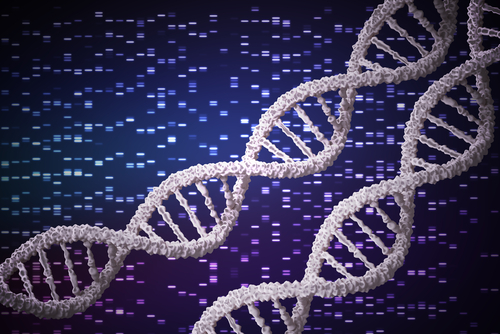CMT Researchers Identify New Mutation Linked to Mild, Adult-onset Type 2A Disease

vchal/Shutterstock
Researchers have linked a mutation on the MFN2 gene to mild, late-onset development of Charcot–Marie–Tooth disease type 2A (CMT2A).
Two cases of adult-onset CMT2A were reported in a study, “Charcot–Marie–Tooth disease type 2A with an autosomal recessive inheritance: the first report of an adult-onset disease” that appeared in the Journal of Human Genetics.
CMT2 is an early-onset disease associated with severe symptoms. It isn’t the most common form of CMT, but is the most frequent among patients with disruption in the axon part of the structure of nerve cells.
In most cases, this condition is due to mutations on the mitofusin 2 gene, or MFN2, which encodes a protein located in the membrane of mitochondria – the cell’s powerhouse. Although scientists don’t fully understand how CMT2 and MFN2 gene deregulation are related, they believe that in the absence of functional MFN2, mitochondria can’t work properly. This damages nerve cells.
Researchers at Japan’s Kyoto University Graduate School of Medicine reported on the case of two sisters with mild adult-onset CMT2 whose parents didn’t have the disease.
The youngest sister began losing her sense of touch or sensation in the feet, and had difficulty with toe-walking at the age of 41. Her condition progressed quickly, and within five years, she needed a cane to walk. By the time she was 52, additional neurological exams revealed muscle weakness and atrophy of the lower limbs, as well as reduced reflexes.
The oldest daughter started having trouble walking at 42, and then began losing sensitivity in the feet. By the age of 65, she was using a wheelchair. Like her sister, she also experienced muscle weakness and loss of lower limb reflexes and sensitivity. This patient also developed truncal instability.
In contrast, a third sister showed no signs of impairment at all.
Analysis of the brain structure via magnetic resonance imaging (MRI) scans revealed mild atrophy of some regions in both affected sisters. Additional computed tomography (CT) of the muscles confirmed muscle atrophy. Nerve cell examination showed degeneration of axons, with fusion and deregulation of mitochondria. Collectively, these findings pointed toward CMT2.
To confirm the diagnosis, the team analyzed 60 genes linked to hereditary motor and sensory neuropathies. This revealed a new mutation on the MFN2 gene in both patients, and identified a change from an arginine to a tryptophan (amino acid change) in position 632 (identified as R632W) in gene’s DNA sequence.
Both patients had two copies of the mutation — one from the mother and another inherited from the father — while the asymptomatic sister only had one copy. This indicates a recessive mutation, requiring two copies to trigger nerve cell degeneration and development of disease symptoms.
The researchers concluded that “this is the first case report of adult-onset CMT2A [CMT2 due to MFN2 mutations] with an autosomal-recessive inheritance pattern.”
Because the sisters had late onset-disease and slowly progressive paralysis, researchers believe the R632W mutation has a low toxicity effect to nerve cells. “The mechanism of MFN2 mutation-induced toxicity is an interesting theme that awaits further investigations,” they wrote.





